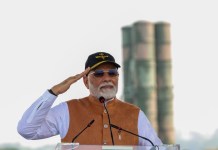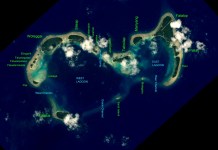“A lie can travel halfway around the world while the truth is putting on its shoes,” is a famous quote attributed to American writer, humorist, and essayist Mark Twain.
The maxim underlines the speedy dissemination of lies and the much slower propagation of corrective truths.
Centuries earlier, the Irish writer and essayist Jonathan Swift expressed similar sentiments when he wrote on this topic in “The Examiner” in 1710: “Falsehood flies, and the Truth comes limping after it.”
However, despite the headstart that lies often get, truth has a habit of winning in the end. As the first US President, George Washington, said: “The truth will ultimately prevail where pains are taken to bring it to light.”
A similar scenario played out during the brief India-Pakistan War in May this year. Islamabad was quick to make bombastic claims.
When pressed for evidence, it had little to offer, but Islamabad thought it could make up for the lack of evidence by repeating the claims anywhere and everywhere.
As German Chancellor Adolf Hitler’s propaganda minister, Joseph Goebbels, put it: “If you tell a lie big enough and keep repeating it, people will eventually come to believe it.”
As often happens, Islamabad’s falsehoods flew high; the claims were repeated in press conferences, meetings with foreign leaders, international conferences, and even at the UN.
However, five months down the line, the Indian Air Force (IAF) is slowly and steadily bursting the balloons of Pakistan’s falsehoods one by one.
But then, Pakistan does not seem much bothered, for it believes that it has already won the perception battle by seizing the moment early on.
Pakistan believes that the IAF fact-checks, coming as they are after nearly six months, will do little to change perceptions at this stage.
Pakistan’s Many Lies: S-400, Rafales & Shivangi Singh
Earlier this month, the EurAsian Times interacted with a Pakistani military enthusiast in the UAE.
As more than five months have passed since the brief war in May, we thought it would be a good inflection point when passions have subsided and there is much more information available to separate fact from fiction.
What struck us during an hour-long conversation was that, even after five months, the ‘Pak Buff’, who by the way prides himself on his objective outlook, unquestioningly believed everything peddled by the ISPR in May.
He was absolutely convinced that seven IAF fighter jets, including four Rafales, were shot down, that PAF struck India’s S-400 air defense system in Adampur, that the IAF base and arms depot in Jammu was obliterated, and that the IAF’s female fighter pilot, Shivangi Singh, was either killed or seriously injured during the May operation.
It mattered little to him what new facts were emerging every week, not just from the IAF but also from independent sources. He still believed the story first narrated by PAF in May, word for word.
However, notwithstanding his blind faith in PAF and ISPR, almost bordering on credulity and gullibility, the narrative over the May clash between India and Pakistan has shifted dramatically.
The IAF has, during the last four to five months, painstakingly brought out new facts, supported by radar signals, digital footprints of missiles, satellite imagery, and even live pictures of weapons and people Pakistan claimed it had struck during the May clash.
In fact, the IAF’s fact-checking of Pakistani claims had started just days after the Operation Sindoor. On May 13, barely 70 hours after the ceasefire was declared between India and Pakistan, the Indian Prime Minister Narendera Modi visited the IAF’s Adampur base.
Pakistan claimed that it had struck India’s S-400 AD system near Adampur.
During the visit, one image stood out from the rest, demolishing Pakistan’s disinformation campaign in one stroke. It showed PM Modi waving at the IAF soldiers, with an MiG-29 jet and an intact S-400 air defence system clearly visible in the background.
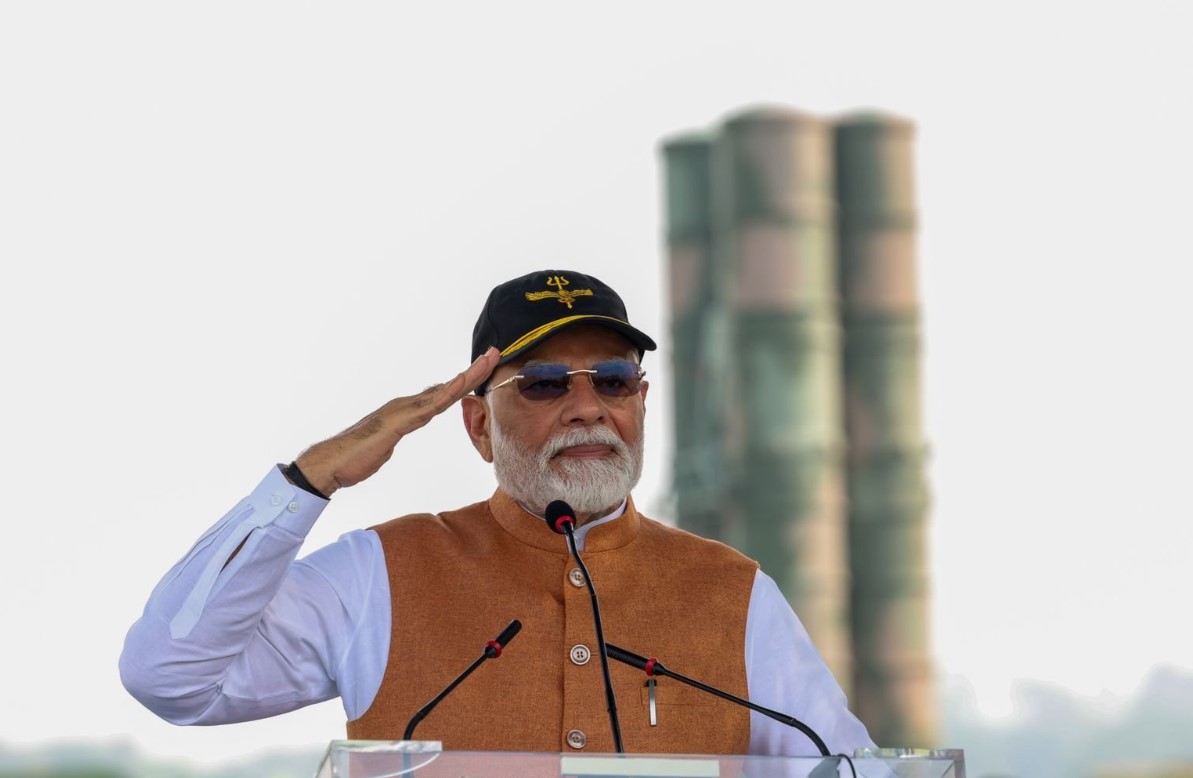
Pakistan had claimed that missiles from its JF-17 fighter jet destroyed the S-400 air defense system in Adampur.
As the saying goes, “A picture is worth a thousand words.” India busted Pakistan’s repeated claims of striking an S-400 with a single image for the whole world to see.
Similarly, while Pakistan repeatedly claimed that it shot down four Indian Rafale fighter jets, it did not provide any evidence for the same.
In fact, funnily enough, when pressed for evidence, Pakistan’s Defense Minister Khwaja Asif told CNN that evidence is all over social media.
What is the proof that Pakistan has shot down Indian planes?
Pak defence minister Khawaja Asif: “It’s all over social media.”
These clowns conduct diplomacy. #operation_sindoor pic.twitter.com/pxzfF76Zt5— Abhijit Majumder (@abhijitmajumder) May 7, 2025
In fact, Pakistan has often contradicted its own claims. It started with the claim of shooting down five Indian jets, including three Rafales. However, nearly three weeks after the clash, Pakistan Prime Minister Shehbaz Sharif said that Islamabad actually shot down six (not five) Indian fighter jets, including four (not three) Rafales.
However, once again, no evidence was shared, nor did the Pakistani PM disclose what new information made him change his mind.
Warnes noted in the article that a senior PAF official told him: “The Rafale is potent enough, and while we initially declared we had shot down three, BS001 [17 Sqn], BS022, BS027 [both 101 Sqn], we also had it confirmed by HUMINT [human intelligence] in mid-July that BS021 [from 101 Sqn] had been confirmed as shot down, over Srinagar.”
Furthermore, speaking at a press conference organized by the Islamabad Policy Research Institute (IPRI), Lt Gen (R) Kidwai, a senior adviser to the country’s National Command Authority (NCA), disclosed the tail numbers of the destroyed Indian Air Force (IAF) Rafales as BS001, BS021, BS022, and BS027.
Now, according to speculative media reports, three Rafales with the exact tail numbers could participate in Cope India 2025 in November.
🇮🇳Rafale Jets That 🇵🇰Pakistan Said It “Shot Down” To Join #CopeIndia2025 Drills?
1⃣Quad nations will come together for their first-ever joint air drill, Cope India 2025, where @IAF_MCC Rafale jets could participate.
2⃣Social media is buzzing with claims that three… pic.twitter.com/kN5QmTIqZl
— EurAsian Times (@THEEURASIATIMES) October 25, 2025
If accurate, then this would finally put to rest Pakistan’s false narrative that it shot down multiple Indian Rafale fighter jets during the May conflict.
Another consistent Pakistani propaganda pertained to IAF’s female fighter pilot Shivangi Singh.
Pakistani media sources initially claimed that Pakistan had captured IAF’s female fighter pilot Shivangi Singh after shooting down her Rafale fighter jet.
This claim was repudiated even by the ISPR. However, after this formal denial, Pakistan-based accounts started propagating on social media that Sq. Ldr. Shivangi Singh’s plane was indeed shot down, forcing her to eject from her aircraft.
They claimed that Sq. Ldr. Shivangi Singh made a hard landing and was admitted to an Indian hospital in critical condition.
A narrative was built on social media that Sq. Ldr. Shivangi Singh was either killed during Operation Sindoor or was critically injured. India was repeatedly taunted to produce Shivangi Singh.
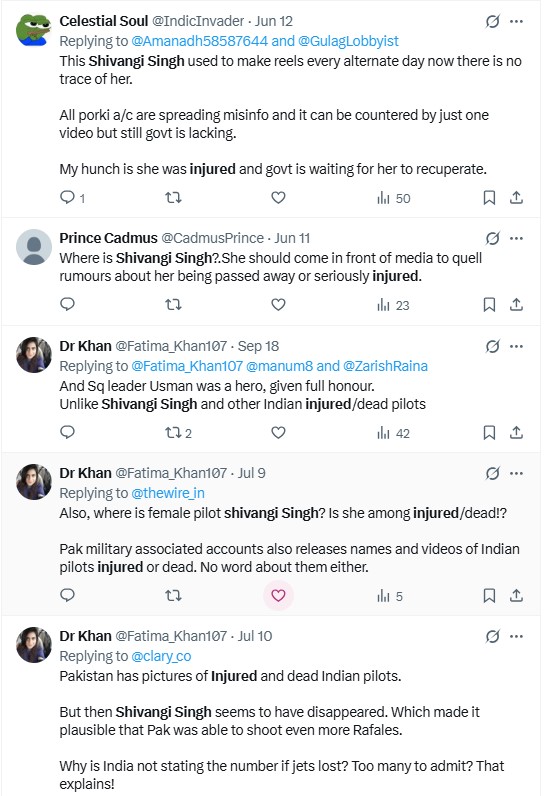
On October 29, President Droupadi Murmu, who took a 30-minute sortie in a Rafale fighter jet, was photographed with Squadron Leader Shivangi Singh, who is looking perfectly healthy, at the Ambala Air Force base – a moment that once again demolished Pakistan’s false propaganda about her capture/death/injury.
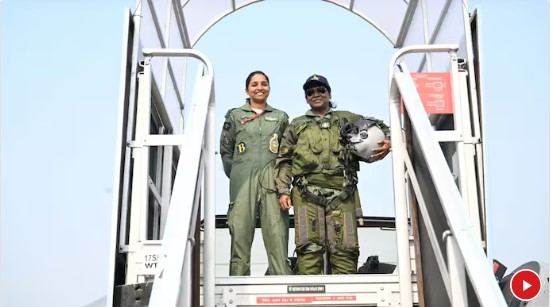
One by one, the IAF is deflating the false propaganda of Pakistan on Operation Sindoor.
Earlier, the IAF Chief, Air Chief Marshal Amar Preet Singh, had challenged Pakistan to produce even a single satellite image showing any damage to an IAF base, hangar, or runway.
Notably, India’s claims of attacking 11 Pakistani airbases on the night of May 9 are supported by satellite imagery produced by independent Western media outlets such as the New York Times and the Washington Post.
The IAF claimed that it targeted 11 PAF air bases in precision strikes on the night of May 9.
These PAF air bases were spread across the length and breadth of the country, with one air base – Bholari – over 270 km from the India-Pakistan International Border (IB).
It covered air bases in Rawalpindi, close to Pakistan’s capital, Islamabad, and critical for logistics, VIP transport, strategic operations, and aviator training, as well as air bases like Sargodha, the headquarters of the Central Air Command, home to the PAF’s best fighter jets and pilots, and dangerously close (20 km) to the Kirana hills, the site that reportedly stores Pakistan’s nuclear weapons.
The message was clear: all PAF air bases, regardless of their strategic, vital, or sensitive nature, are vulnerable.
The IAF named the air bases it attacked: Rawalpindi, Chakwal, Sargodha, Rahim Yar Khan, Jacobabad, Sukkur, Bholari, and Shorkot.
On May 14, The New York Times published a detailed report, complete with ‘before and after’ HD images of PAF air bases India attacked on the night of May 9.
“The four-day military clash between India and Pakistan was the most expansive fighting in half a century between the two nuclear-armed countries. As both sides used drones and missiles to test each other’s air defenses and hit military facilities, they claimed to inflict severe damage,” the NYT report said.
Satellite imagery indicated that while the attacks were widespread, the damage was far more contained and “appeared mostly inflicted by India on Pakistani facilities.”
“Where India appears to have had a clear edge is in its targeting of Pakistan’s military facilities and airfields, as the latter stretch of fighting shifted from symbolic strikes and shows of force to attacks on each other’s defense capabilities.
“High-resolution satellite imagery, from before and after the strikes, shows clear damage to Pakistan’s facilities by Indian attacks, if limited and precise in nature,” it said.
It also said that similar evidence for Pakistani claims is lacking.
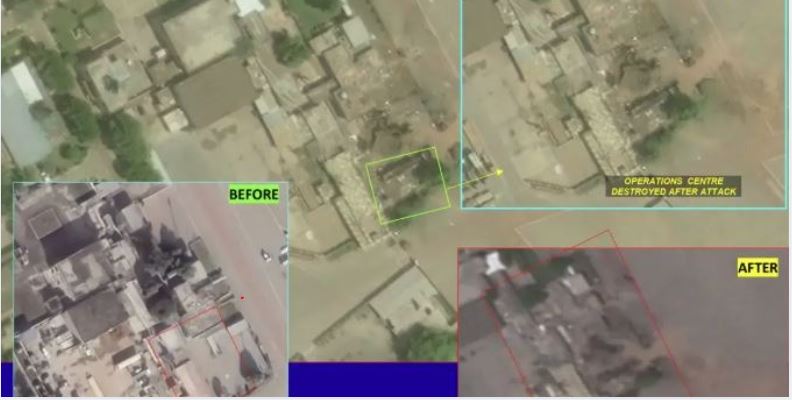
“Satellite images of the sites Pakistan claimed to have hit are limited, and so far do not clearly show damage caused by Pakistani strikes even at bases where there was corroborating evidence of some military action.”
A Washington Post report also supported India’s claims.
“The review of more than two dozen satellite images and aftermath videos found that the strikes heavily damaged three hangars, two runways, and a pair of mobile buildings used by the air force. Some of the sites hit by India were as deep as 100 miles inside the country,” it said.
“At the Pakistani air force’s Bholari and Shahbaz air bases, satellite imagery showed severe damage to buildings used as aircraft hangars. A large hole nearly 60 feet wide is visible in the roof of a hangar at Bholari.”
The report stated that a hole over 100 feet wide can be observed in the hangar at Shahbaz Air Base.
The IAF Chief is absolutely right to challenge Pakistan to produce similar satellite images confirming damage to IAF bases.
But then it seems Pakistan is working on a different strategy: making bombastic claims early on and hoping some of them, even if lacking evidence, will stick.
As Irish writer Jonathan Swift put it: “Falsehood flies, and the Truth comes limping after it; so that when Men come to be undeceiv’d, it is too late; the Jest is over, and the Tale has had its Effect…”
- Sumit Ahlawat has over a decade of experience in news media. He has worked with Press Trust of India, Times Now, Zee News, Economic Times, and Microsoft News. He holds a Master’s Degree in International Media and Modern History from the University of Sheffield, UK.
- VIEWS PERSONAL OF THE AUTHOR. THIS IS AN OPINION ARTICLE
- He can be reached at ahlawat.sumit85 (at) gmail.com

